SEARCH






|
|
|
|


by Miro Susta
When I remember the many flights I’ve taken in the past, there is nothing else than the spectacular views of the world below the airplane that remain in my memory; views which we are not able to see from the ground.
There are plenty of opportunities to take pictures from an airplane if you have a window seat despite the physical limitations, so it is worth to have your camera accessible.
But if you intent to take photos through the airplane window during your next flight you have to make some preparations prior commencing your journey. Therefore, I like to give you some useful suggestions.
See on the map expected flight path.
For example if you fly from Paris to the East (can be Sofia, Mumbai or Singapore) try to get the seat on the right side, so you may have the opportunity to capture Swiss and Austrian Alps or from North to South do not miss the opportunity to capture the famous Mt. Kilimanjaro or just the Andes.
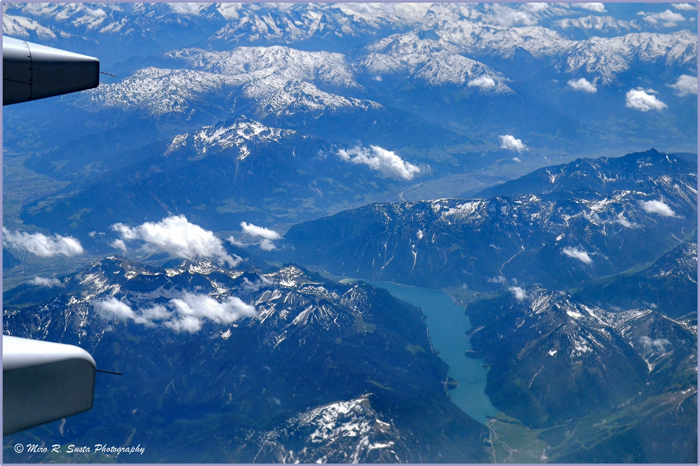
Lake Hallstat, Austrian Alps . Altitude 12,000 m . 43 mm . 1/600sec . f/10 . ISO 200
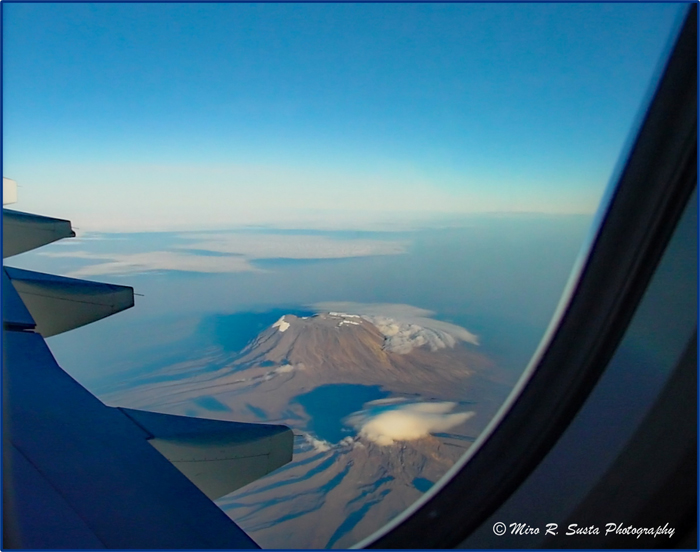 Mt. Kilimanjaro, Kenya . Altitude 13,000 m . 24 mm . 1/200sec . f/4 . ISO 100
Mt. Kilimanjaro, Kenya . Altitude 13,000 m . 24 mm . 1/200sec . f/4 . ISO 100
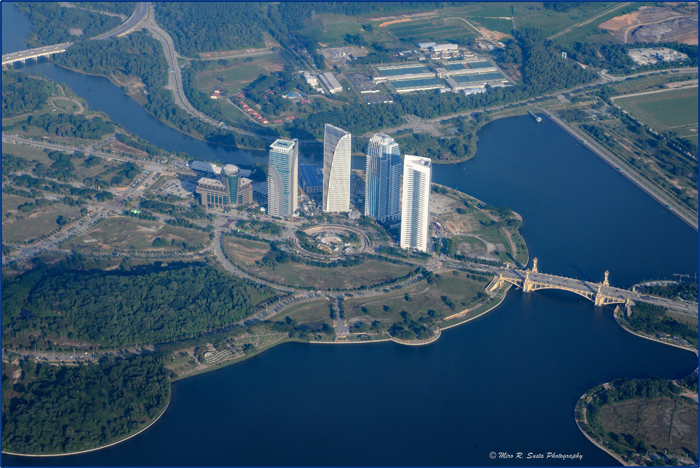
Putrajaya, Malaysia . Altitude 4,000 m . 85 mm . 1/640sec . f/9 . ISO 500
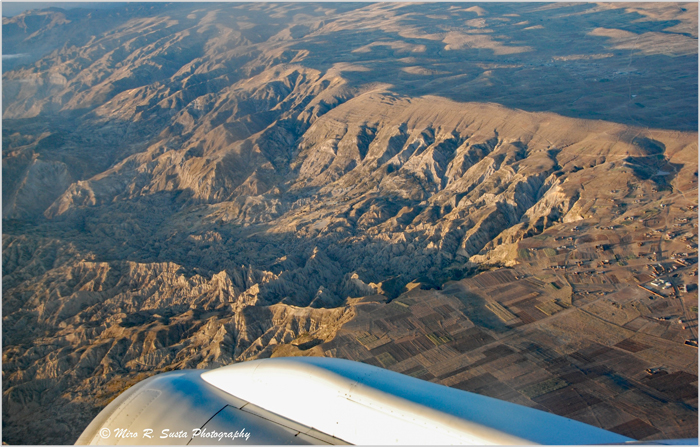
Bolivian Andes . Altitude 12,000 m . 28 mm . 1/80sec . f/4.5 . ISO 200
Oblique or vertical?
Oblique photographs are taken from a low (low oblique) or high (steep oblique) angle earth surface–aircraft. Oblique shots are more usual and easier to deal with. Low oblique photos are very common during airplane start-up and landing when the airplane is at lower altitude (up to around 2000-3000 m).
High oblique and vertical photographs are usually taken from airplane cruise altitude (7000 to 13000 m) or when the airplane is moving in banking turn, but don’t be disappointed when your vertical shot will not become full vertical.
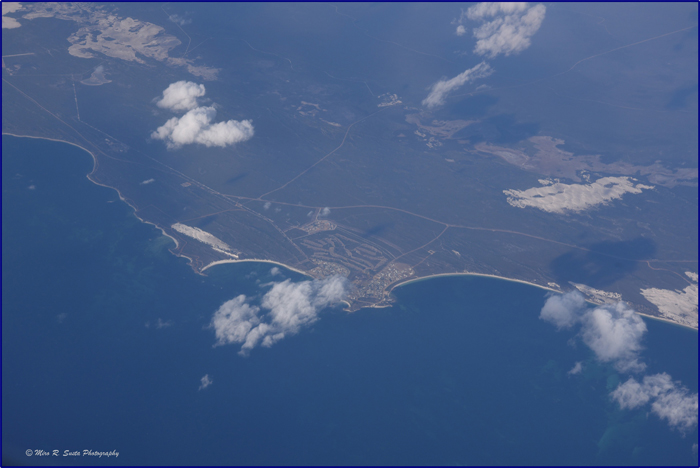 Western Australia Coast . Altitude 13,000 m . 85 mm . 85 mm . 1/1000sec . f/9 . ISO 320 (high oblique)
Western Australia Coast . Altitude 13,000 m . 85 mm . 85 mm . 1/1000sec . f/9 . ISO 320 (high oblique)
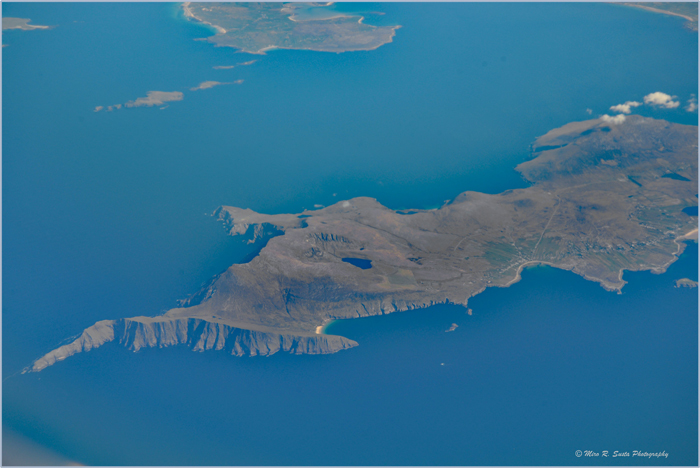
Southeast Ireland Coast . Altitude 13,000 m . 85 mm . 1/250sec . f/8 . ISO 200 (high oblique)
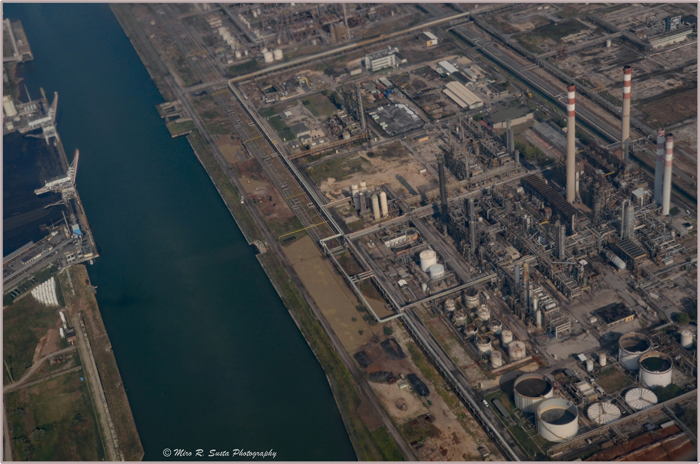
Northern Italy . Altitude 3,000 m . 26 mm . 1/640sec . f/9 . ISO 160 (almost vertical)
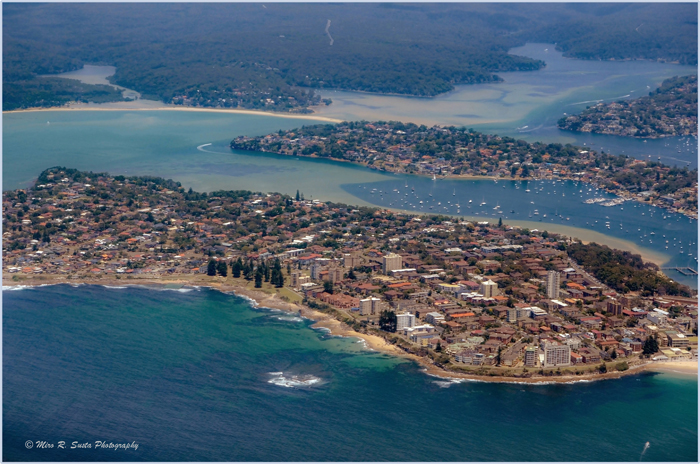 Woolooware Bay, Australia . Altitude 4,000 m . 58 mm . 1/800sec . f/8 . ISO 200 (low oblique)
Woolooware Bay, Australia . Altitude 4,000 m . 58 mm . 1/800sec . f/8 . ISO 200 (low oblique)
Never take a seat immediately behind the jet engines.
The hot exhaust gas will ruin your photo; there will be a heavy blur effect in the area behind the engine.
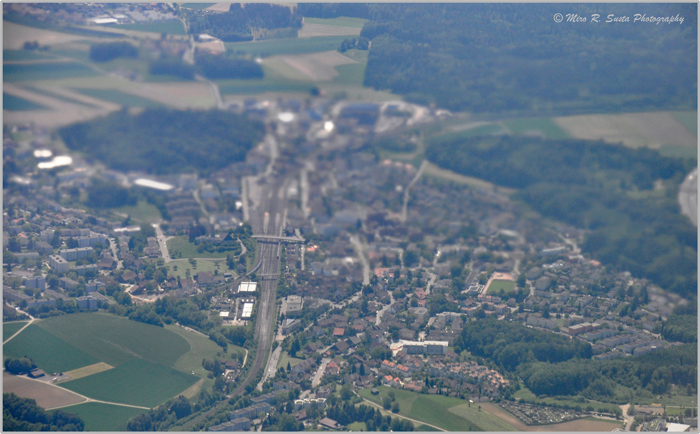
Northern Switzerland . Altitude 5,000 m . 92 mm . 1/1,600 sec . f/6.3 . ISO 400 (heat shimmer visible)
Try to make combinations ground/sky with wing, winglet, engine(s), and window frame.
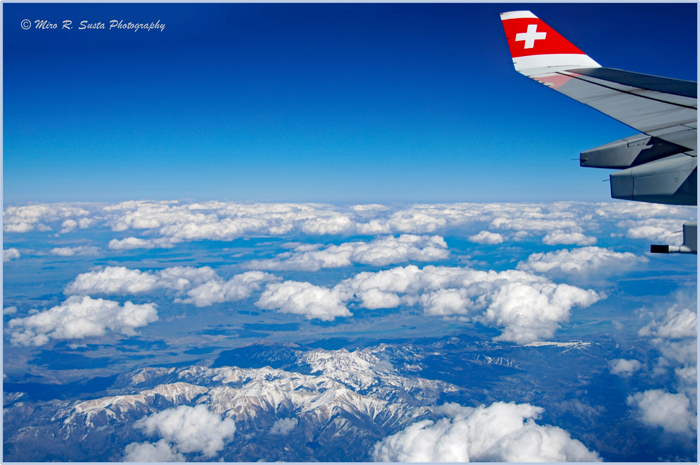
Rocky Mountains, USA . Altitude 13,000 m . 24 mm . 1/250sec . f/4.2 . ISO 100
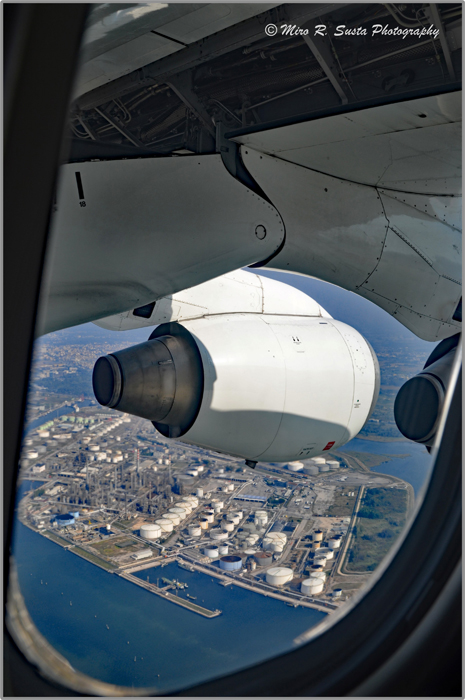
Northern Italy . Altitude 3,000 m . 26 mm . 1/250sec . f/9 . ISO 160
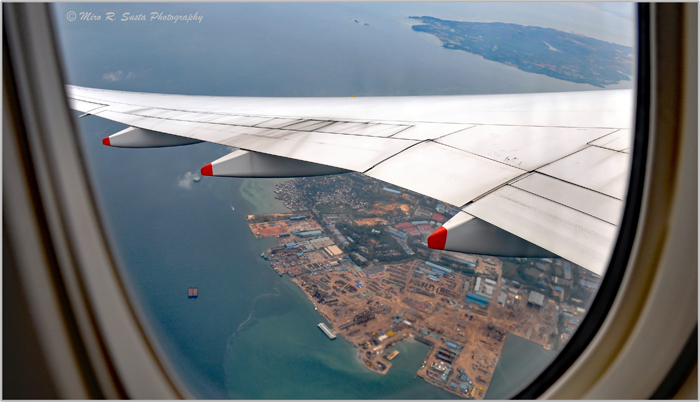
Batam Island, Indonesia . Altitude 5,000 m . 18 mm . 1/250sec . f/8 . ISO 200

View to Southern Bangladesh . Altitude 13,000 m . 48 mm . 1/640sec . f/9 . ISO 250
If possible do not take a seat over the wings.
The wing will not allow full view down unless the airplane is moving in banking turn. The best seat is the window seat in front of the wings (just in front of jet engines) and also an acceptable seat for good photos is in the rear part of the airplane. Front seat offers smoother ride with less vibrations.
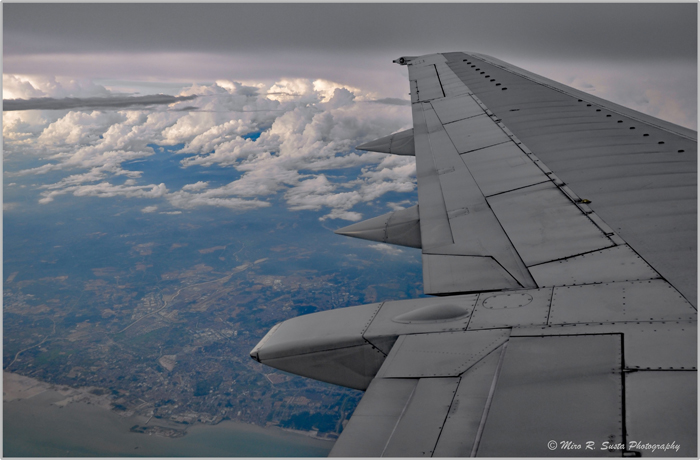
Southeast Malaysia . Altitude 10,000 m . 20 mm . 1/125 sec . f/8 . ISO 200
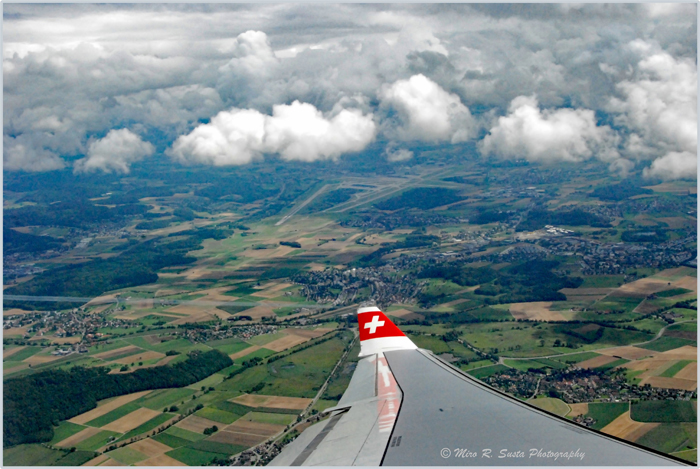
Kloten, Switzerland . Altitude 6,000 m . 29 mm . 1/1250 sec . f/18 . ISO 3200 (taken during airplane banking turn)
It is also not recommendable to take a seat near the emergency exit.
Good for safety, not very good for taking pictures during start-up and landing because you will not be allowed to hold your camera during this period, unless you are using a small pocket one or your mobile phone camera (must be in airplane mode).
Make sure that you will not face the sun during your flight, except late afternoon-early evening when you can capture beautiful sunset and fabulous sky colors or early morning with beautiful sunrise light. During day time the direct sunlight will spoil your photos.

Sunrise Sky, Germany & Swiss Alps . Altitude 11,000 m . 70 mm . 1/250sec . f/13 . ISO 200
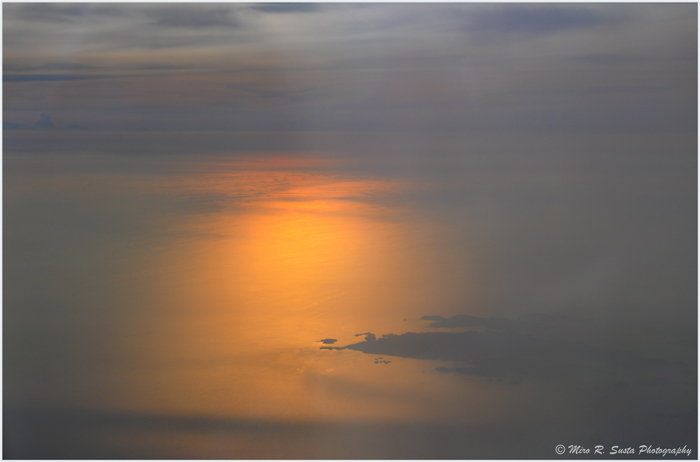
Sunset, Southern China Sea . Altitude 13,000 m . 70 mm . 1/4000sec . f/9 . ISO 200
 Evening Sky, Nepal . Altitude 12,000 m . 50 mm . 1/2sec . f/1.4 . ISO 320
Evening Sky, Nepal . Altitude 12,000 m . 50 mm . 1/2sec . f/1.4 . ISO 320
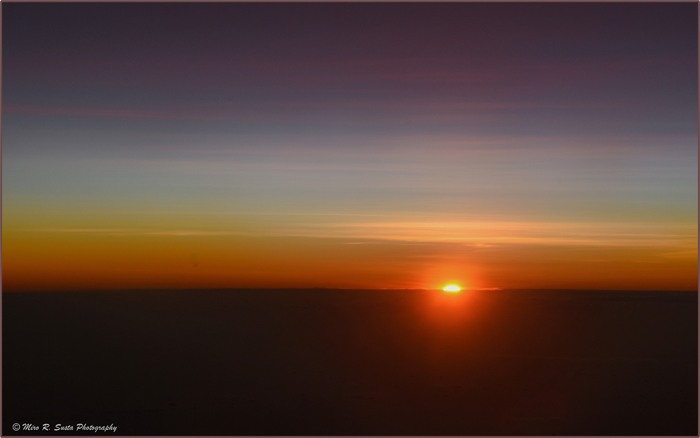
Sunset, Central Australia . Altitude 13,000 m . 85 mm . 1/400sec . f/9 . ISO 320
Try your creativity.
For example do not hesitate to create panoramic views or even to capture night views. Attached some examples, the Himalayas, lights from Sao Paulo and fishing boats lights in Andaman Sea as I have seen from the airplane window.

Himalayas . Altitude 13,000 m . 85 mm . 1/400sec . f/22 . ISO 250
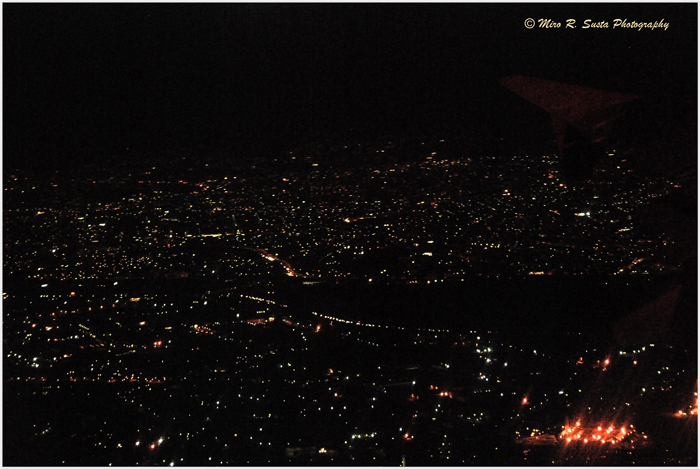
Lights of Sao Paulo, Brazil . Altitude 10,000 m . 62 mm . 1/20sec . f/5.6 . ISO 3200

Fishing Boats Lights, Andaman Sea . Altitude 13,000 m . 50 mm . 1/3sec . f/1.4 . ISO 3200
During take-off (approximately up to an altitude of 2000-3000meters) and landing the airplane movement against the ground makes it important to set a faster shutter speed to avoid motion blur.
During this phase the shutter speed shall not be slower than 1/250 sec, and ideally at 1/500 sec or even 1/1000 sec.

Singapore Airport . Altitude 1,500 m . 75 mm . 1/1250sec . f/6.3 . ISO 250

Changi MRT Depo, Singapore . Altitude 1,000 m . 55 mm . 1/1000sec . f/18 . ISO 1800
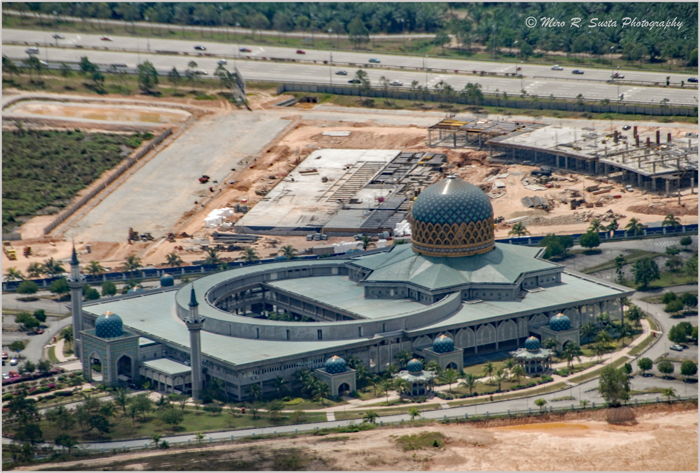
Sepang Mosque, Malaysia . Altitude 900 m . 200 mm . 1/800sec . f/5.6 . ISO 200
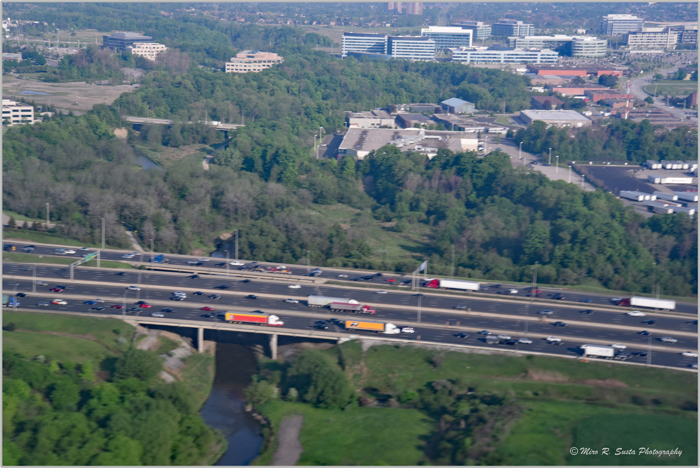
Toronto Highway, Canada . Altitude 1,500 m . 70 mm . 1/80sec . f/9 . ISO 800
(the highway is not in proper focus; low shutter speed)
Do not focus your camera only on the ground.
The sky and clouds around the airplane are very often so beautiful.
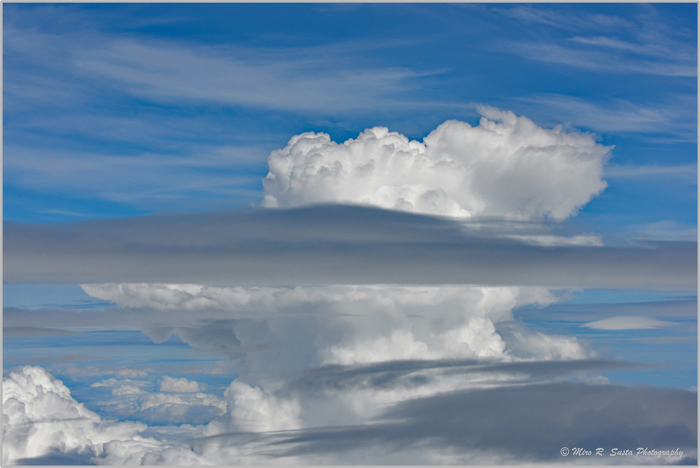
Altitude 13,000 m . 80 mm . 1/800sec . f/10 . ISO 250

Altitude 13,000 m . 200 mm . 1/50sec . f/8 . ISO 800

Altitude 13,000 m . 50 mm . 1/20sec . f/9 . ISO 320
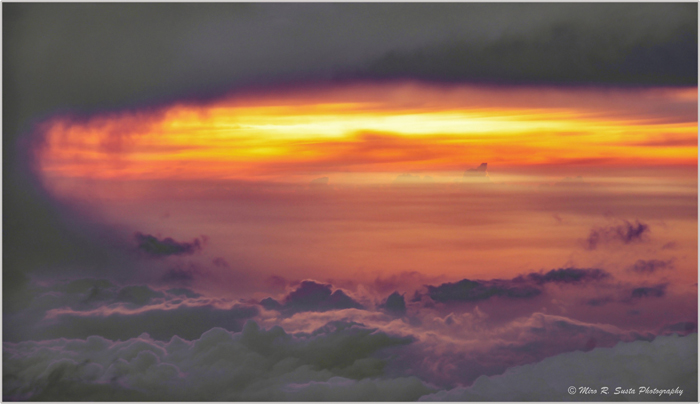
Altitude 13,000 m . 140 mm . 1/50sec . f/9 . ISO 200
Do not use a polarizing filter (PF), this will ruin your photo.
The PF creates an unrealistic-looking rainbow effect on plastic windows and on windows which have been tinted or treated with coatings which appears when taking photos with a PF through an airplane window.
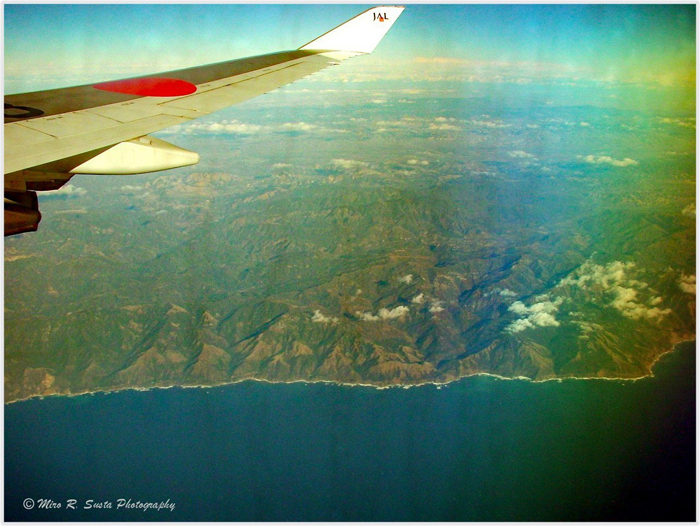
California Coastline . Altitude 12,000 m . 17 mm . 1/200sec . f/4 . ISO 100
Sometimes the camera can get confused when shooting through glass (especially through scratched and marked window). Switching to manual focusing mode and locking your focus on your main focal point can help a lot. To make the least of scratches and imperfections in the window material, press the lens right up against it but do not touch the window (vibration danger) and use a fairly wide aperture.
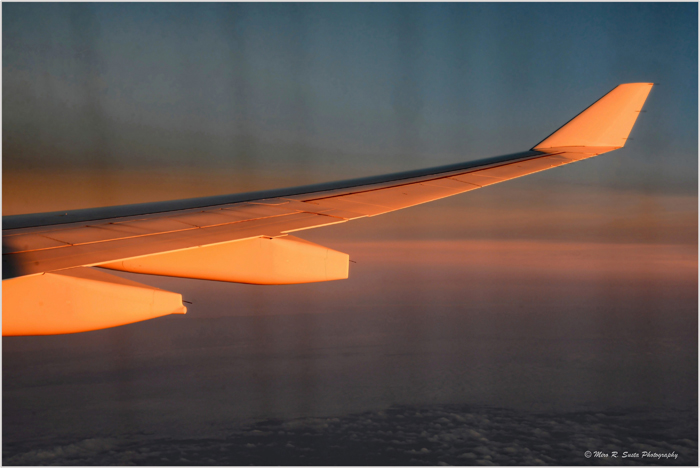
Early Evening Sunlight Coors Over Southeast Malaysia . Altitude 9,000 m . 58 mm . 1/20sec . f/9 . ISO 500
(visible scratches)
The best lens for photos taken through commercial airplane windows is a 24-200 mm zoom lens.
If you are flying in first or business class with more space around you, you may try to use also a larger tele-lens; practicable up to 400 mm. However under some circumstances a larger tele-lens may transmit too much camera shaking and there will be more haze effect. However my best choice is still the range between 50 and 100mm. Following I wish to show you two photos which have been selected for 30 Most Astounding Aerial Photographs You Will See Today some time ago, one with focal length of 58 mm and the second one 102 mm.
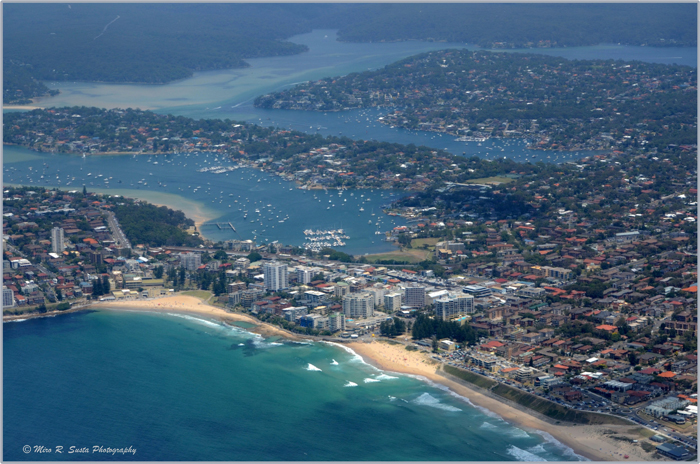
Woolooware Bay, Australia . Altitude 4,000 m . 58 mm . 1/640sec . f/8 . ISO 200
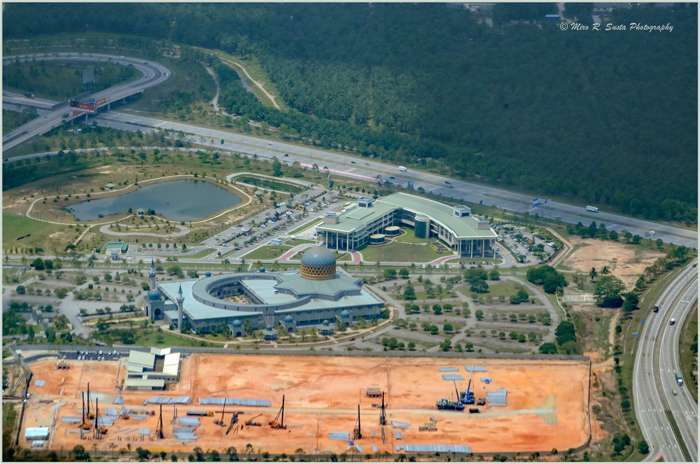
Sepang Mosque, Malaysia . Altitude 3,000 m . 102 mm . 1/1000sec . f/18 . ISO 1250
Avoid any vibration from the airplane by keeping your hands, arms and elbows away from the seat or window.
Do not use the flash light!!!!
Last advice, please be aware that some countries do not allow photography from overflights (especially the airports photographs), but the crew can advise you about it and do not disturb too much with your photo activities your fellow passenger sitting next to you.
I hope that the above will help you to improve the quality of your photographs through the commercial airplane windows. I have referred to most worldwide used medium size and large commercial airplanes with the jet engines placed under the airplane wings. There may be some differences for photos taken from turboprop and smaller airplanes with tail mounted engines.
You can view my selected aerial photographs here:
MRS Aerial Photos A
MRS Aerial Photos B
https://sustamiro.wixsite.com/travelphoto/aerial
http://mirosusta.zenfolio.com/p806734806
 | Write |
 | Robert Komarek PRO Highly interesting - thank you particularly for detailed descriptions!
Congrats & regards, Robert :-) |
 | Yvette Depaepe CREW Hi Miro, I was the first to read this article with so much pleasure. Flying regularly, I'll take all your tips with me, next time. I'm sure many readers will love and use your suggestions. Thanks a lot for your fine collaboration, dear friend! |
 | Jacob Jovelou FOUNDER Lovely tutorial! |
 | Miro Susta CREW Jacob I hope this will be of use to you and all 1x-readers. Thanks for your appreciation. |